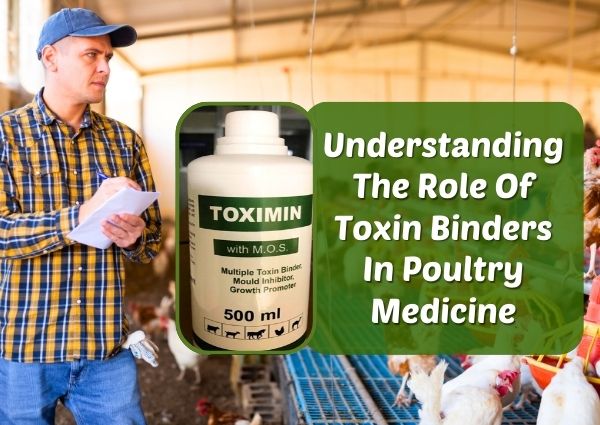What Are Toxin Binders?
Toxin binders, also known as mycotoxin binders or adsorbents, are substances that can chemically bind to toxins in the digestive system of poultry, preventing their absorption into the bloodstream. These binders can be derived from various sources, including natural materials like clay, yeast, and activated carbon, or they can be synthetic compounds. Their primary function is to reduce the bioavailability of harmful substances, thus minimizing their impact on poultry health.
Why Are Toxin Binders Necessary?
Poultry are susceptible to a range of toxins that can adversely affect their growth, immunity, and overall health. Some common sources of these toxins include:
- Mycotoxins: Produced by moldy grains and feed ingredients, mycotoxins such as aflatoxin, ochratoxin, and fumonisin can lead to severe health issues in birds, including liver damage, immunosuppression, and poor growth rates.
- Environmental Toxins: Chemicals from pesticides, heavy metals, and pollutants can accumulate in poultry systems, causing stress and illness.
- Antinutritional Factors: Certain feed components may contain natural toxins that hinder nutrient absorption and utilization.
By incorporating toxin binders into poultry diets, producers can help protect birds from these harmful substances, promoting better health and productivity.
The Mechanism Of Action
Toxin binders work by adhering to toxins within the gastrointestinal tract of poultry. This binding process reduces the availability of toxins for absorption, effectively “trapping” them and allowing for their excretion through feces. The effectiveness of toxin binders can vary based on their chemical structure, particle size, and surface area. Thus, it is essential for poultry producers to choose appropriate binders tailored to the specific toxins they are dealing with.
Benefits Of Using Toxin Binders
- Improved Flock Health: By reducing the absorption of harmful toxins, toxin binders help maintain a healthier immune system in poultry, decreasing the incidence of disease and promoting overall well-being.
- Enhanced Feed Efficiency: When poultry are healthier, they can utilize feed more effectively, leading to improved growth rates and better feed conversion ratios. This translates to lower feed costs and higher profitability for producers.
- Reduced Economic Losses: Toxins can lead to significant economic losses through reduced growth, increased mortality, and veterinary costs. Implementing toxin binders can mitigate these risks, ensuring a more stable income for poultry producers.
- Regulatory Compliance: With increasing scrutiny on food safety and animal welfare, using toxin binders can help poultry producers comply with regulatory standards by reducing the risk of toxin contamination in meat and egg products.
Choosing The Right Toxin Binder
When selecting a toxin binder for poultry, it is essential to consider several factors:
- Type of Toxins: Different binders target specific toxins. Understanding the prevalent toxins in your feed or environment will guide your choice.
- Efficacy: Research and data on the effectiveness of various binders against specific toxins should inform your decision.
- Cost-Effectiveness: Evaluate the cost relative to the benefits gained in flock health and productivity.

